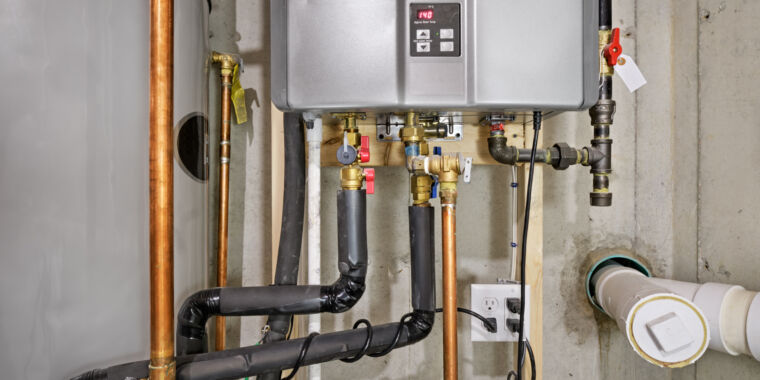Enhancing the Efficiency of a Tankless Water Heater
A significant challenge that arose in my household was the delayed arrival of hot water when turning on the tap. Initially seeking a solution to this inconvenience, I inadvertently discovered a potential security vulnerability in water heaters resembling my own. Through some tinkering with the API and simple email authorization, a malicious actor could theoretically adjust the temperature setting or cause the unit to run continuously. This realization prompted a deeper investigation.
Initial Observations
Upon moving into a new residence with a Rinnai tankless water heater installed in the garage utility closet, minimal guidance was provided by the builder and home inspector, aside from recommending an annual cleaning cycle. Unlike traditional models, tankless water heaters do not store hot water in a tank for immediate dispensing. This design feature reduces energy consumption by up to 34%, as confirmed by the Department of Energy. However, the trade-off is a longer wait time for the water to heat up upon opening a faucet, as the system initiates heating and routing processes in response to demand.
This delay compelled me to endure cold water on my hands during daily activities, waiting longer than expected for warm water to surface. While I appreciated the energy-saving benefits of the system, the inconvenience grew increasingly frustrating over time. The prolonged delay not only wasted potable water, although readily available and relatively inexpensive, but also consumed valuable time.
Exploration and Resolution
The ultimate solution unexpectedly presented itself during a routine maintenance check. While closing off the water outlets for winter, I noticed a marked plastic bag adhered magnetically to the rear surface of the water heater. It bore a vivid yellow declaration demanding the installation of a Control-R Wi-Fi Module for recircularization capabilities. The necessity of this accessory was underscored by its absence, preventing the heater from functioning optimally without recirculating the water as required.
Recirculation denotes the immediate dispensing of hot water upon demand, eliminating the need for negative pressure build-up within the pipes. To enable this feature, Rinnai supplied smartphone applications that interfaced with the module via its servers. Following a meticulous perusal of the installation manual, I disabled the water heater, gaining access to its internal components. Despite the stern warnings within the document urging non-interference, I felt adequately prepared to proceed, having dealt with similar hardware configurations in the past.
Successfully attaching the module, establishing connectivity through a peculiar hotspot designated by the manufacturer, marked a pivotal achievement. The accompanying smartphone application now empowered me to initiate recirculation remotely, enabling me to access hot water promptly from various locations within the house. While this newfound convenience alleviated the initial inconvenience, the necessity of engaging with a mobile device each time hot water was required introduced a fresh form of disruption.
Image/Photo credit: source url





